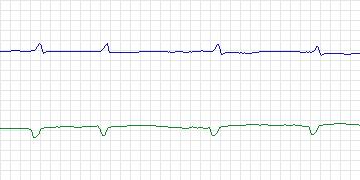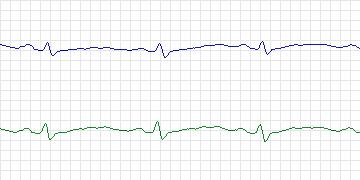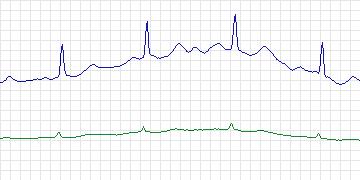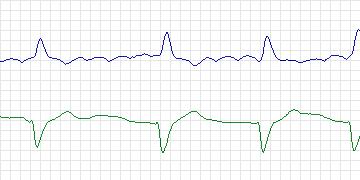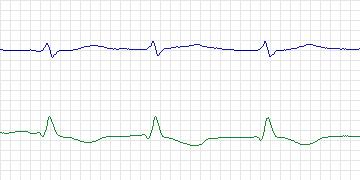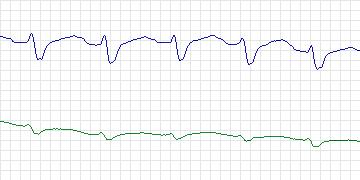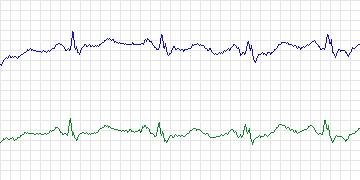Sudden Cardiac Death Holter (23 records)
This is a collection of long-term ECG recordings of patients who experienced sudden cardiac death during the recordings. Half-hour excerpts of these recordings are available as the MIT-BIH Malignant Ventricular Arrhythmia Database. more...
The database currently includes 18 patients with underlying sinus rhythm (4 with intermittent pacing), 1 who was continuously paced, and 4 with atrial fibrillation. All patients had a sustained ventricular tachyarrhythmia, and most had an actual cardiac arrest. These recordings were mainly obtained in the 1980s in Boston area hospitals, and were later compiled as part of a study of ventricular arrhythmias. Because of the retrospective nature of this collection, there are important limitations. Patient information is limited, and sometimes completely unavailable, including data regarding drug regimens and drug dosages. Further, these cases may not be representative of spontaneous episodes of sudden death in what is likely a very heterogenous group of subjects. Despite these shortcomings, these unique recordings may provide important clues to the pathogenesis of sudden death syndrome.
An estimated 400,000 Americans, and millions more worldwide, die suddenly each year. These events are most often initiated with a sustained ventricular tachyarrhythmia, including ventricular tachycardia (monomorphic or polymorphic), ventricular flutter, or ventricular fibrillation, with a smaller percentage related to a primary bradyarrhythmia. Sudden cardiac death syndrome may be due to a wide variety of different electrical and mechanical substrates, including acute myocardial infarction, chronic coronary disease with prior myocardial infarction(s), cardiomyopathies, myocarditis, valvular heart disease, right ventricular dysplasia, the long Q-T syndrome (acquired or congenital), Wolff-Parkinson-White pre-excitation, the Brugada syndrome, drug toxicity (e.g., proarrhythmic effects of cardioactive drugs; epinephrine, cocaine, and related stimulants), and so forth. Moreover, some individuals have no demonstrable electrical or mechanical predisposition.
For more information:
- http://www.physionet.org/physiobank/database/sddb/
- Greenwald SD. Development and analysis of a ventricular fibrillation detector. M.S. thesis, MIT Dept. of Electrical Engineering and Computer Science, 1986.
- Goldberger AL, Amaral LAN, Glass L, Hausdorff JM, Ivanov PCh, Mark RG, Mietus JE, Moody GB, Peng C-K, Stanley HE. PhysioBank, PhysioToolkit, and PhysioNet: Components of a New Research Resource for Complex Physiologic Signals. Circulation 101(23):e215-e220 [Circulation Electronic Pages; http://circ.ahajournals.org/cgi/content/full/101/23/e215]; 2000 (June 13).

